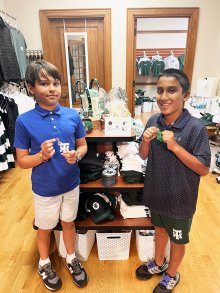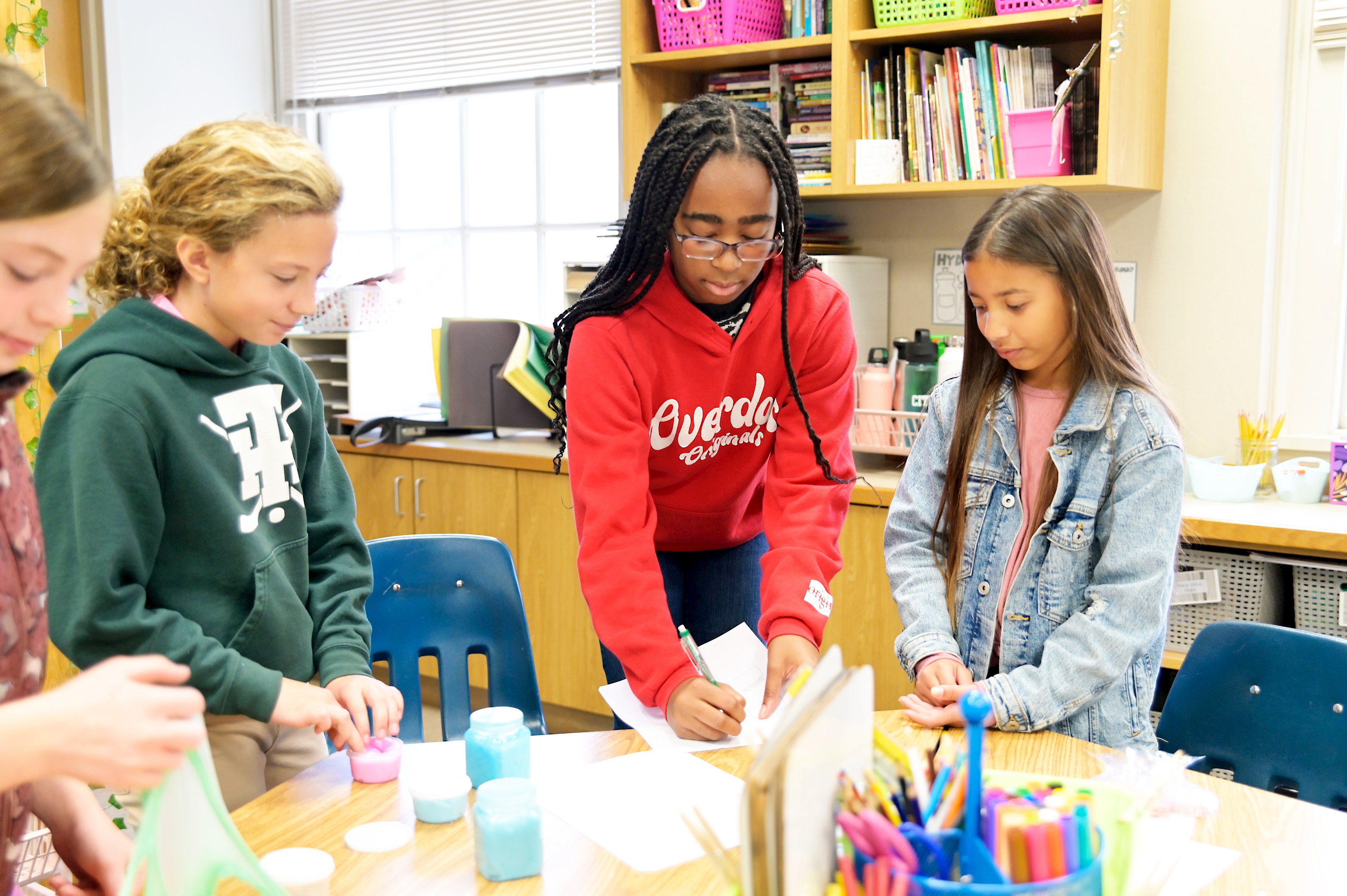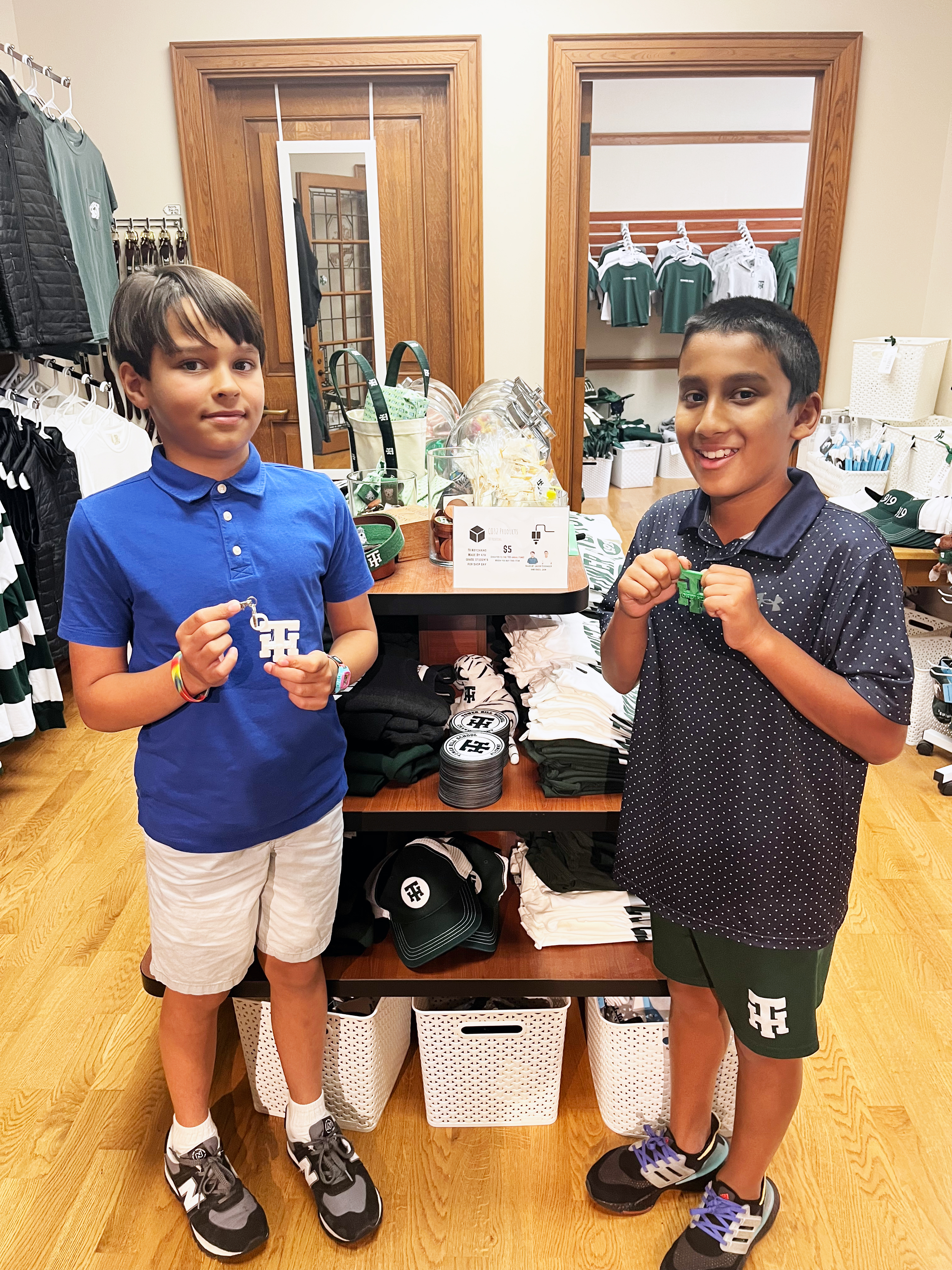
By Nicole Becker, Fourth Grade Teacher
Fourth grade at Tower Hill is a unique and special experience as it is the students’ last year in the Lower School. As fourth grade teachers, we try to implement capstone projects that hold the same significance. One of those memorable events culminates in the fourth grade Shop Day.
When students enter the fourth grade classrooms in September, they not only become a part of a classroom community, but also part of a classroom economy. Classroom economy is a program that enables us to teach children financial responsibility through fun, experiential learning. It’s a simple classroom economic system based on the idea that students need to earn school “dollars” so that they can rent their own lockers and pay “taxes.” The children then learn basic economic concepts-the difference between wants and needs, the role consumers and producers play in an economy, the difference between goods and services, and the basic laws of supply and demand.
Learners apply for classroom jobs using an application where they describe why they want specific jobs and what skill sets they have for that job. Students are then hired for a classroom job and begin earning a weekly salary. They have a chance to earn bonuses for certain “bucket filling” actions, but can also be fined for “bucket dipping” actions. After reading the book, Have You Filled a Bucket Today? by Carol McCloud, students help to develop rules for what behaviors and actions will count towards bucket filling or bucket dipping. A mathematical component of the project involves students having to manage and balance their bank accounts throughout the year. As contributing members of an economy, the fourth graders then have to create and develop an original product or service to sell to their peers.
Using a design approach to learning and problem solving, students begin to brainstorm possible ideas for a product that meets a need for someone in our Tower Hill community. Ideas include hair scrunchies for those PE days when you forgot one to tie your hair back, a book shield to protect library books from water damage when carrying water bottles to and from school, stress balls to use as fidget items and even a taste test of various foods to encourage us to try new things in the dining commons. After students sketch out their ideas, the next step is to develop a prototype of their product to test and receive feedback. After watching a fourth grader on the popular entrepreneur show Shark Tank, fourth graders brought their prototypes to school and Middle Schoolers then became the “sharks,” providing feedback to the students on how to improve their prototypes. After receiving feedback, they went back to the drawing board, taking advice from their older peers on how to make their product even better.
After refining their goods, students prepared for the first Shop Day of the year. Anxious and excited to share their goods and sell to their classmates and teachers, students set up shop in November. The classrooms were abuzz with students eagerly selling and marketing their products to one another. Teachers then chose three students, one from each classroom, who marketed their product most creatively with the best storefront, those with the most original design, those who most met a need and one “people’s choice” winner. These lucky few students were able to pitch their ideas to a handful of Upper Schoolers from both the Business Club and the Arts Board, who chose one student to present their product at Lower School Town Meeting.
Adelynn Pratt’s book shield product was this year’s lucky winner of the most met a need category. She was one of four final winners.
“When Ms. Becker explained that we needed to come up with a product to meet a need for Shop Day, I thought about what a Tower Hill student would need during the school day, and my mind wandered back to one library class,” explains Pratt. “During that class, Mrs. McCreary was showing us water damaged books. I thought about how I could help keep them from becoming water damaged, and I decided to make a book shield. Once I had my product, I included five surprise stickers to make it more appealing to customers. When I won the most met need category, I was very proud!”

Although Jacob Eissinger and Aneil Jain’s 3D printed Tower Hill keychains were not chosen by the Upper Schoolers for most original product, they were given advice to continue marketing their product. They persevered and pitched their project to the Tower Hill School Store, and within a few weeks, Jacob and Aneil’s Shop Day project came to life as they began selling the keychains to Tower Hill students and families. They donated the profits from their sales back to the school via the Annual Fund.
“After seeing our success on Shop Day, it was then exciting to see our key chains be featured in the School Store,” says Jain.
Seeing the success and excitement of students whose products come to life is not only a proud moment for teachers but for the students as well.
As the year progressed, students had a second Shop Day opportunity to develop a good for sale. Through cross-curricular studies, students began researching a country in Europe as part of the Lower School Passport Program. They developed presentations with Google Slides, Canva and good old fashioned tri-fold posters to teach others about their country. They then had to develop and design a product based on their country of study for their second Shop Day project. We saw the 1919 Auditorium turn into its own version of a European fair with desserts, foods and games. This time though, students linked their classroom economy with the real world. We invited students and teachers in first through third grade to donate $1 in exchange for $100 classroom dollars to shop the fair. Fourth graders were then able to showcase all they learned, not only about their country, but about economics.
Fourth graders then voted to donate the money earned to Save the Children, an international organization that helps keep children around the world healthy, safe and educated.
The classroom management tool that is our classroom economy has grown and developed into a cross-curricular, year-long study involving financial literacy, math, social studies, reading and writing. By bringing real world scenarios into the classroom, students see the impact of their decisions to save, spend and budget. They learn that they are not only a part of an amazing fourth grade capstone project, but that their products can become a reality.







